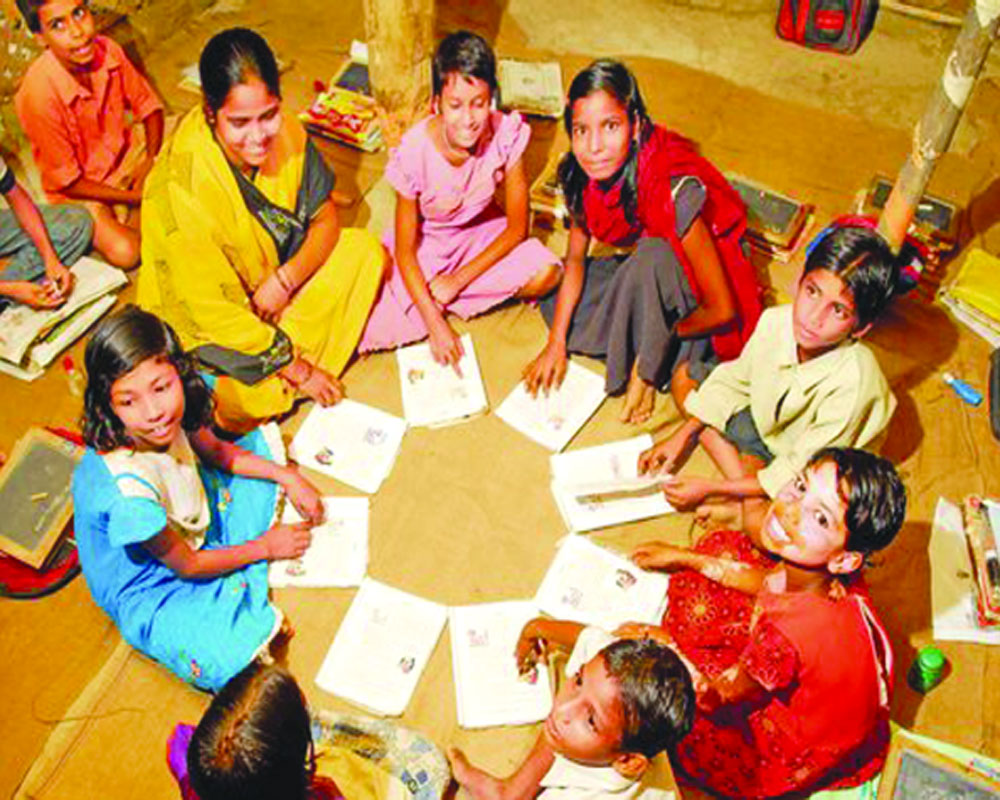The draft NEP has set ambitious goals on paper but is ignorant of the very basic aspect of school education. A lot will depend on realistic implementation
Even as the draft National Education Policy (NEP), 2019 has proposed that the current name of the Ministry of Human Resource Development be changed to the Ministry of Education, it was heartening to see that allocations for the education sector saw a substantial raise in the Budget presented by
Union Finance Minister Nirmala Sitharaman. Also, the emphasis on research and institutions of excellence will ensure that our universities are able to make significant contributions and in the process come up to the level of Indian Institutes of Technology (IITs) and the Indian Institute of Science. But what is worrisome is the very basic aspect of school education.
It is quite a paradoxical situation that despite a growth in the number of mobile phones and its reach and penetration — both indicative of the levels of awareness — the percentage of school dropouts has hardly diminished; the national average being in the neighbourhood of about 18 per cent. While India has been counting on its demographic dividend and thinking in terms of channelising youth energy in national reconstruction, the current state of education at the school level does not augur well.
One does not need much of an elaboration to understand that the foundations of a promising youth are essentially laid in the schools. In this context, much was expected of the draft NEP but as far as school education is concerned, it does not hold much promise.
To begin with, the main thrust of the vision statement is on an India-centred education system, contributing towards transformation of our nation sustainably into an equitable and a vibrant knowledge society. Being India-centric is fine but the emphasis on children and youth is missing from what should be a holistic vision. Let us not forget that it is they who have to grow in the next 10-15 years and take the nation ahead.
Earlier, the logic behind the enactment of the Right to Education (RTE) was that it was getting stratified into specific social segments and for various reasons, a large proportion of girls and other deprived sections of society were being left out. A correlation of sorts was also found between poverty and illiteracy. According to official estimates of 2004-05, the number of poor was almost similar to the number of illiterates (300 million) in the country. This enactment was supposed to benefit all sections of society but after the introduction of RTE, the system came under a severe strain and though some earlier aberrations have now been addressed, even the NEP falls short of expectations in this regard; though a review has been recommended.
One of the major flaws which was rectified earlier this year was through an amendment to the RTE, which was notified in March 2019. The Act was amended to provide for regular examination in Class V and VIII at the end of every academic year.
A provision for additional instructions and opportunity for re-examination within a period of two months was also made. A specific provision for detention in case of a failure was made but an expulsion from the school till the completion of the elementary education was prohibited.
A study commissioned by the Sarva Shiksha Abhiyaan found that actual teaching in the classroom in some of the States did not exceed more than half-an-hour a day. The actual attendance of students in classrooms in such States had been registering an alarming fall. High absentee rates of teachers often contributed towards absenteeism of students.
The problem only appears to have got aggravated after the RTE stipulated norms for basic infrastructure and facilities besides the teacher pupil ratio. They were found difficult for implementation. The suggestions in the NEP on sharing of resources among cluster of schools in respect of libraries, IT and other laboratories, music and sports facilities and some non-core teachers, would have very limited practicability and that, too, possibly only in certain urban areas where commuting is not a problem.
Considering that the NEP aims to achieve a teacher-pupil ratio of 1:25, sharing of teachers may end up only as an exercise on paper. Even simple hiring of more permanent teachers may not solve the problem entirely as there is a pronounced tendency to hand over the class to another teacher.
On the other hand, it has been observed that the frequency of inspections by senior education officers is strongly co-related with lowering of the absentee rate. Research has shown that regular inspections may be many times more cost-effective than hiring additional teachers. Such inspections by seniors would be even better than proposed parental or community-level monitoring.
In fact, such community-level monitoring should go hand-in-hand with regular inspections.
With all the emphasis on better pedagogy and teacher pupil ratio, there would still be pitfalls as the latter would be difficult to achieve. Studies have shown that performance-linked pay incentives can improve the quality of learning as well as performance of students, particularly in the areas of Mathematics and languages. Such an incentive, to curb absenteeism, can also be linked to the number of hours actually spent on teaching.
While this comprehensive draft policy appears to be very ambitious on paper, its success would entirely depend on the actual implementation of the plans with full cooperation from States as also the availability of finances.
It has been proposed that investment in education — both at the Central and State level — would increase by 20 per cent over a 10-year period. Considering the financial constraints, which is being faced by almost all States, this appears to be a very difficult proposition.
(The writer is a retired Delhi Police Commissioner and former Uttarakhand Governor)


























